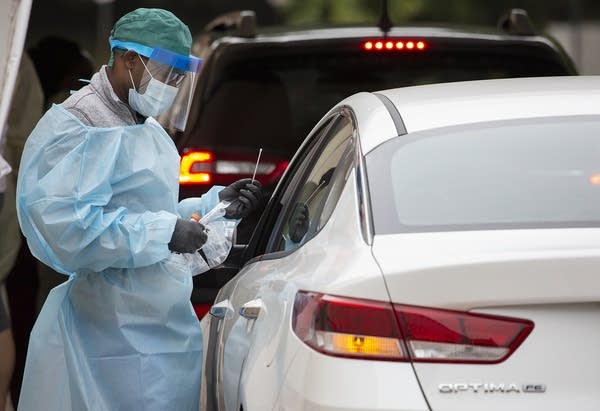Aug. 30 update on COVID-19 in MN: Number of cases climbs past 75,000

Finlay Marube, a medical lab scientist, administers a COVID-19 test on Aug. 7 at the drive thru or walk up testing site at North Memorial Health Specialty Center in Robbinsdale.
Christine T. Nguyen | MPR News
Go Deeper.
Create an account or log in to save stories.
Like this?
Thanks for liking this story! We have added it to a list of your favorite stories.


